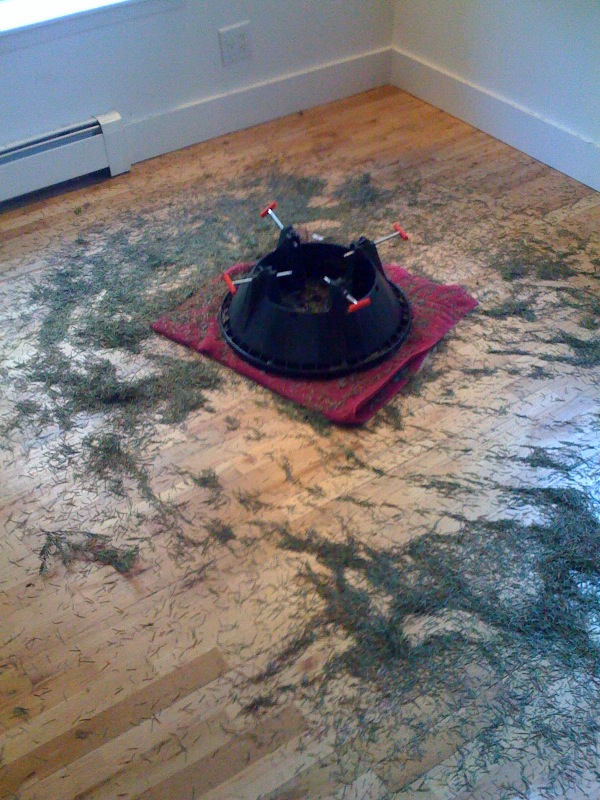
By now many of you have a Christmas tree up and decorated, probably taking pride of place in a public place in the house. Our offices are certainly decked out! And those things are so very very happy making this time of year, aren’t they? Whether you’ve hung expensive ornaments, loved off and faded family favorites, or paper moons by the pre-schooler for the first three feet off the ground, a decorated and lit tree is a note of cheer in what has already been a bunch of grey, cold, wet December mornings.
But oh, the needles….

Needle shedding is normal. And obviously you know the basics about keeping your tree from shedding more than the pet:
- Use a tree skirt, bigger is better so that you have room to catch, collect, and toss fallen needles.
- Use a big enough stand to fit and properly water the tree – you want to be able to use about 1 quart of water per inch of stem diameter.
- Make a fresh cut before you stick the tree in the stand.
- Place the tree away from heat sources, which dry it out.
- Water immediately.
- Check water levels daily.
But needle drop is inevitable. Here is what we’d like you to know about how we handle cleaning around your tree.
- We start off with a dustpan, but ….
- We will follow up by vacuuming. Be sure to empty out the vacuum bag or canister. Needles fill up the space quick!
- Shop vacs rock. If you have one, and we can use it, that helps!
- If you prefer that we NOT use your vacuum cleaner, or maybe just stick to the hose attachment, let us know ahead of time. If you’d rather we didn’t vacuum, please be sure to leave us a large roll of sticky tape. One of the low-tech ways to get needles off carpet, especially deep pile or berber, is to simply Macgyver up sticky tape into an oversized lint remover.
Last but not least , sap happens! This has more to do with you when you’re disposing of the tree, especially after the holidays are over, but here’s useful advice if you do get sapped: Rubbing alcohol, hand sanitizer, nail-polish remover, olive or vegetable oils all help. There are other options too – WD-40, paint thinner, turpentine or mineral sprits, and as this article wisely says, “You just have to decide what you’re comfortable putting on your hands.”